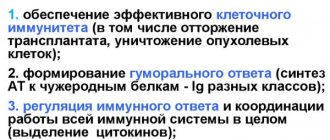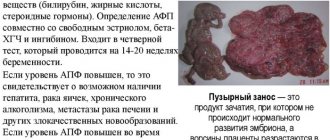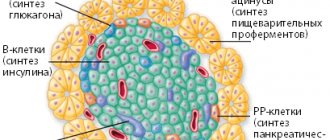A smear from the cervical canal in women is one of the simplest and most common tests in obstetrics and gynecology. Based on this analysis of the cervix, it is possible to make some diagnoses, for example, dysplasia or colpitis, and to identify patients who need a more in-depth examination, for example, a culture test for flora or cytology.
What is the cervical canal
The cervical canal is a cavity inside the cervix, located along its entire length. With the help of the cervical canal, the uterine cavity is connected to the vagina. Functions of the cervical canal:
- allows sperm to enter the uterine cavity to fertilize the egg;
- removes menstrual blood from the uterus;
- During childbirth, it serves as a channel for the passage of the fetus.
Inside the cervical canal there is a mucus plug. It prevents infection from entering the uterus from the vagina. At the beginning and end of the menstrual cycle, the mucus is thick and does not allow sperm to pass through. During ovulation, the mucus plug softens and sperm freely penetrate into the uterus.
What diagnostic methods are used
In laboratory practice, four main methods are used to analyze scrapings. The choice of study depends on the expected pathology and the doctor’s decision.
Microscopy
A method of studying material under multiple optical magnification (microscope) using special reagents that stain microorganisms. The evaluation algorithm includes:
- size, shape, number, type of epithelial cells;
- the number of white blood cells (leukocytes);
- presence/absence of red blood cells (erythrocytes);
- consistency and amount of mucus;
- Dederlein bacilli and opportunistic microorganisms (bacteria, fungi of the genus Candida);
- presence/absence of pathogenic bacteria (prokaryotes, parasites);
- other inclusions.
Microscopic examination is considered the most common, accessible and cheap way to evaluate a smear.
Polymerase chain reaction (PCR) method
PCR diagnostics allows you to determine the genetic structure of the causative agent of sexually transmitted infections. The method is based on an amplification reaction (multiple copying of RNA or DNA of pathogenic microorganisms). The cycler produces more than 30 cycles of temperature changes, each of which includes 3 stages (denaturation, primer annealing, elongation).
With a sufficient number of copies, the amplifier gives a qualitative and quantitative assessment of the detected pathogen. Polymerase chain reaction is used to diagnose latent infectious diseases. The reliability of the method reaches 99%, the execution speed is 24 hours.
Bacteriological culture
Bakposewing is the planting of a sample of biological material on laboratory containers (Petri dishes) filled with nutrient media favorable for the growth of pathogenic microorganisms. The presence of infection is indicated by the intensive reproduction of pathogens and the formation of colonies. Laboratory assistants evaluate the dynamics of the process and the final number of colony-forming units (CFU).
Based on the results, an antibiogram is performed - an analysis for resistance to antibacterial drugs. Determining sensitivity to antibiotics allows you to choose the most effective medicine. Bacteriological culture reveals infectious agents that are not detected under a microscope. The method is informative, but obtaining results takes 5-7 days, during which colonies are grown.
Pap test or Pap test (Papanicolaou smear)
A cytological examination of a smear from the endocervix shows the condition of the epithelial cells of the cervix. Cytology is performed to detect abnormal cells, precancer, or cervical cancer. The study is performed in cases of suspected oncopathology, NOMC, problems with conceiving a child, or erosive lesions of the cervix. For preventive purposes, annual analysis is indicated for women aged 35+.
What diseases are diagnosed using a smear?
Smears from the cervical canal are taken to diagnose infectious and oncological diseases:
- bacterial colpitis;
- chlamydia;
- trichomoniasis;
- gonorrhea;
- syphilis;
- papillomavirus infection;
- herpetic infection;
- precancerous conditions;
- malignant tumors.
A cervical smear shows the state of the microflora on the cervical mucosa and the presence of atypical cells.
Taking a smear from the cervical canal is indicated if the following symptoms are present:
- copious purulent discharge from the genital tract;
- spotting between periods;
- pain in the lower abdomen not associated with menstruation;
- rashes on the skin of the perineum;
- swelling and soreness of the external genitalia;
- burning during urination, sexual intercourse;
- enlarged lymph nodes in the perineum.
Preventive examination is recommended annually for all women of reproductive age. Women over 50 years old undergo a smear once a year for oncocytology - for the early detection of malignant tumors.
The analysis is carried out for pregnant women three times - upon registration, at 30 and 36 weeks of pregnancy. The purpose of the examination is to reduce the risk of intrauterine infection of the fetus during pregnancy and childbirth.
How is a smear taken?
The procedure is performed using sterile gynecological instruments. To provide access to the cervical canal and visual inspection of the genital organs, a Cusco gynecological speculum is inserted into the vagina.
The gynecologist clears the cervix of mucus accumulation and takes a sample from the area where squamous epithelial cells give way to columnar epithelium. To collect scrapings from the endocervix, a cytobrush probe with a cervical brush is used, which ensures atraumatic collection of material from the surface of the mucous membrane.
Additionally, the gynecologist carries out:
- bimanual (two-handed) examination to identify lumps, cysts, tumors, deviations in the size of the uterus and ovaries;
- taking a smear from the urethra with a medical bacteriological loop;
- taking a smear from the posterior vaginal fornix with a sterile swab.
The resulting biomaterial is distributed over a glass slide and kept at room temperature until completely dry. Glass slides with smears are marked (C – sample from the endocervix, V – from the vagina, U – from the urethra), the material is fixed with reagents and sent to the clinical laboratory for analysis.
Taking a sample from the cervical canal
Important! A smear is not taken in the first week of the follicular phase of the menstrual cycle (the period of bleeding).
Examination of a smear from the cervical canal
A smear is taken on a gynecological chair, after examination by a doctor. The procedure is painless and accompanied by discomfort. For research, mucus is taken from the cervical canal. The doctor collects it with a spatula and then with a special cytobrush. The mucus is spread onto two glass slides and sent to the laboratory. There the material is examined under a microscope. The result is ready in 1-2 days. After taking the material, the mucous membrane is damaged, so the woman is advised to abstain from sexual intercourse for 2-3 days. During this period, spotting and spotting may appear - this is normal.
The composition of the microflora is examined in a smear from the cervical canal. To do this, the sample is stained with special dyes and examined under a microscope. The laboratory technician indicates the number of normal and pathogenic bacteria.
If necessary, a culture from the cervical canal is prescribed for flora. This is done to more accurately determine pathogenic bacteria and their quantity. At the same time as culture, sensitivity to antibiotics is determined in order to prescribe appropriate treatment.
To detect viral infections, PCR diagnostics are required. The polymerase chain reaction method detects the genetic material of viruses.
Cytology (oncocytology)
A study for atypical cells is done for early detection of cancer. Mucus is collected from the walls of the cervical canal with a cytobrush, and the sample is examined under a microscope.
Interpretation of the result of a smear from the cervical canal for oncocytology:
- I - mucous membrane is not changed, an indicator of health;
- IIa - cytogram of inflammation, treatment required;
- IIb - proliferation of the mucous membrane, a more detailed examination is needed;
- IIIa - mild dysplasia, requires colposcopy, treatment and observation for a year;
- IIIb - moderate dysplasia, requires treatment and observation with regular tests;
- IV - suspicion of cancer;
- V - confirmed cancer.
With IV and V degrees of cytogram, a woman requires treatment and observation by an oncologist.
Normal values for a cervical smear
Normally, the mucus of the cervical canal contains mucus and epithelium. There should be no bacteria in the cervical canal. Decoding of normal indicators:
- Le - leukocytes, no more than 30 cells;
- Ep - flat epithelium, no more than 10 cells;
- mucus - moderate amounts are allowed;
- lactic acid flora is absent, unlike vaginal mucus.
Any types of pathogenic bacteria and fungi - Trichomonas, gonococci, candida - must be absent. Key cells should not be detected - this is the epithelium bearing Gardnerella. There should be no Escherichia coli bacteria - this is Escherichia coli, which sometimes enters the vagina from the rectum.
How to prepare
There is no need to do anything special, the biomaterial is taken on days free from menstruation, but in emergency cases it is possible in the first days of the cycle. As a rule, to get tested you need to visit a doctor from days 9 to 21 of your cycle.
Before visiting a doctor you must:
- Avoid intimate relationships during the day;
- Do not take antibiotics or similar medications for two weeks before the procedure. If treatment needs to be continued, the doctor should be notified;
- Candles, lubricants and aromatic intimate hygiene products should not be used;
- 2 hours before your visit to the doctor, do not go to the toilet in small quantities so that the smear is reliable. Otherwise, any microflora in the urethra will be washed away;
- Don't douche! You can only wash your private parts with warm water. Douching will wash away all microflora from the vagina and cervical canal; this method is used in cases where they want to improve the result of the study, but there is no benefit from it, it is biased.
When receiving an ideal analysis, you can miss the disease, and the doctor does not need an empty result, the main thing is the woman’s health. You need to take a smear in good faith, not to spread the disease, which is then more difficult to treat and more expensive.
In cases where the level of leukocytes is high and the pathogen has not been identified, a repeat smear is taken with provocation. On the eve of the test, you need to drink beer with herring or pickled cucumber, and eat smoked meats.
Indicators during pregnancy
The norm of a smear from the cervical canal during pregnancy is slightly different from the analysis in non-pregnant women. Due to hormonal changes, more mucus and epithelium are allowed. White blood cells should remain within 30 cells per field of view, and no species of bacteria or fungi should be detected. A smear from the cervical canal is a gynecological analysis that detects infectious, inflammatory, and oncological diseases. You need to take the test if you have symptoms, as well as prophylactically once a year.
How to decrypt
A general microflora analysis shows the number of Dederlein bacilli; you should not be alarmed. These are lactobacilli, which normally make up up to 95% of the vaginal microflora, but not less than 90%. With their help, a woman’s vagina is kept healthy and does not allow pathogenic microorganisms to multiply.
Leukocytes. They protect the entire human body from pathogenic bacteria. If their level increases, this indicates the presence of an inflammatory process in the body and treatment is required. Many sexually transmitted diseases can be asymptomatic, that is, hidden, but the smear will show a very high number of leukocytes. This may indicate infection with trichomoniasis or gonorrhea. The pathogen is often not detected in a smear; it is necessary to do a bacterial culture after provocation. Doctors attach great importance to the degree of vaginal cleanliness.
Women may encounter another type of test, which involves taking a smear, called a Papanicolaou smear, or Pap test. With its help, you can determine whether there are malignant neoplasms. All women over 30 years of age should undergo a Pap test. Every year it is necessary to visit a gynecologist and take this test, especially for those ladies who have been diagnosed with HPV (human papillomavirus), many types are oncogenic in nature.
The Pap test is also called an analysis for atypical cells (AC), and it is also oncocytology and cytology. If the result is positive, this does not mean that oncological processes are developing, it simply signals the need for an extended examination. It is necessary to do a biopsy, colposcopy and other tests as prescribed by the doctor. Using a Pap test, you can detect the problem early.
You can look at the results of the study yourself, but the gynecologist is responsible for the accuracy. The result can be divided into 5 types, the first – when there are no AKs, the woman is completely healthy. If type 2 or 3 is identified, there may be a latent course of inflammatory processes that need to be identified by ordering an examination in type 2 and histology in type 3. if type 4 is detected, most likely the disease exists, but it is just beginning.
Type 5 indicates an oncological neoplasm; a full examination is recommended. After a smear, a definitive diagnosis is not made; a repeat diagnosis is prescribed. If, upon repetition, cancer cells are found in large numbers, the oncological process is developing and urgent measures are necessary.
Methodology
Curettage of the cervical canal is carried out on an outpatient basis under a local paracervical block. The procedure is carried out in compliance with all the rules of asepsis and antisepsis without prior dilatation of the cervix and probing of the uterine cavity. After inserting double-leaf speculum into the vagina, the cervix is disinfected with an alcohol iodine solution. To straighten the uterine canal, the anterior lip of the cervix is grabbed with a single-tooth holder and slightly lowered to the entrance to the vagina. Curettage of the cervical canal is carried out with a small sharp curette No. 2. The instrument is inserted only to the internal pharynx. When the curette penetrates the uterine cavity, endometrial cells enter the scraping of the endocervix, which reduces the diagnostic value of the method.
The pointed surface of the curette is pressed tightly against the wall and with movements from top to bottom in the direction from the internal pharynx to the external pharynx, the canal is scraped along the entire circumference without removing the instrument from it. After scraping all the walls, the material, consisting of blood, mucus, cellular and tissue detritus, is placed in a container with formaldehyde and sent for histological examination. A smear is applied to a glass slide using a curette for cytological examination. The instruments are removed and the cervix is re-treated with an antiseptic. The duration of the cervical canal curettage procedure is 3-5 minutes.
Additional Tips
Tip #1
It is recommended to take a smear test 5-6 days after the end of menstruation.
Tip #2
There is no need to be alarmed if the doctor prescribes a repeat test with provocation (drinking alcohol on the eve of collecting biomaterial). This procedure is performed if the pathogen is not identified, and the levels of leukocytes and epithelium are sharply increased.
Tip #3
If an infection is diagnosed, you should not self-medicate with antibiotics. An incorrectly chosen drug will ease the symptoms, but will not destroy the pathogen. The disease will take on a chronic form that is difficult to treat. The medicine must be prescribed by a doctor, taking into account the sensitivity of the pathogen, personal contraindications, and the intensity of the infectious-inflammatory process.










